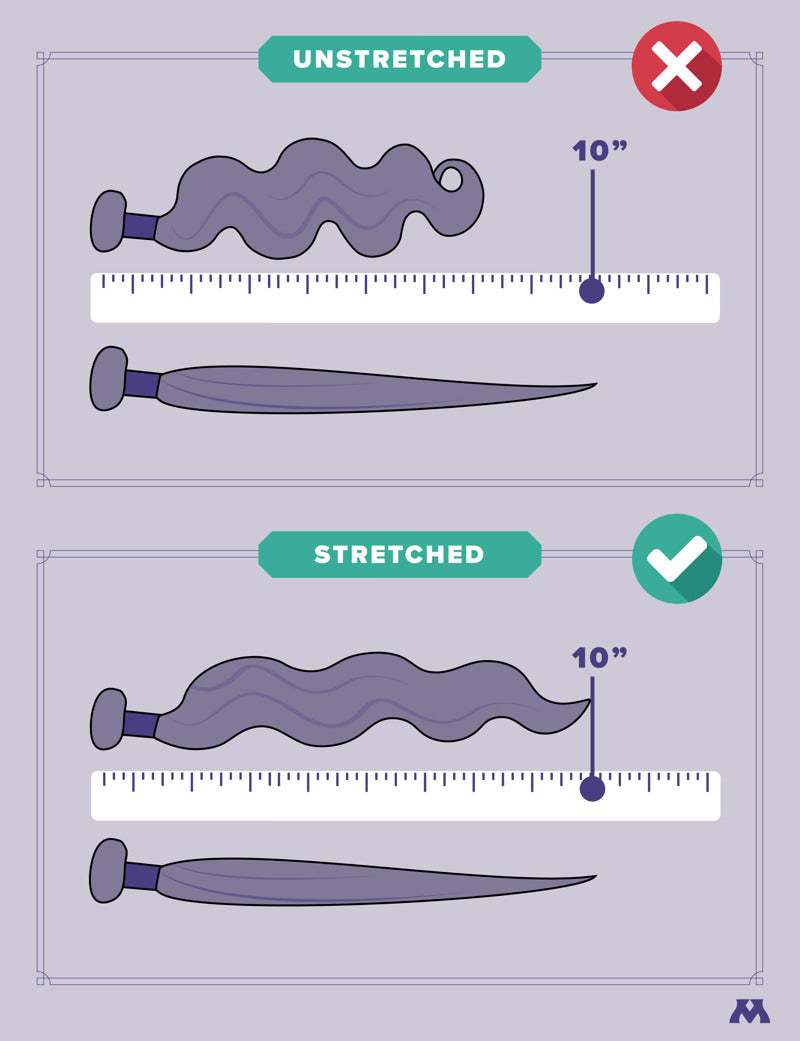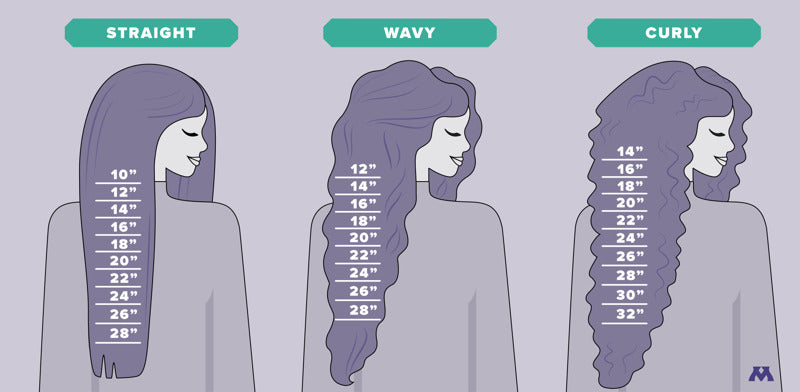Choosing the right human hair wig for yourself may feel like a challenging task. There are so many factors to consider like texture, style, origin, and length, not to mention the difference between virgin and non-virgin hair, and lace front wigs versus 360 lace wigs.
With the right information, though, finding your perfect wig is totally possible, which is why we’ve put together a handy wig length guide. Using this guide, you’ll gain a better understanding of how wigs are measured and what the measurements mean when you’re browsing different styles.
How a Wig is Measured
When you’re shopping for wigs, you’ll likely find that they are offered in various lengths. But have you ever wondered what that means exactly?
The measurement listed on the wig is an approximation of where the hair on the unit will fall after it’s installed. For example, if it’s 12 inches, the hair will land about 12 inches from the crown of your head.
Wigs are measured from the root of the hair around the crown to the ends. Curly and wavy styles are measured the same way, but when taking the measurement, the hair is pulled straight to get an accurate measurement.

As a general rule, curly hair will fall 1 to 2 inches shorter on your back than straight hair but can fall even shorter depending on how tight the curl pattern is.
Of course, there may be slight fluctuations in the length depending on the texture of hair, how it’s installed, and your height. To help you better understand wig measurements, or to measure a unit yourself, follow the steps below.
Wig Length Guide: 3 Steps to Measure a Wig
1. Place the unit on a wig head or lay flat on a table. If the unit is wavy or curly, gently stretch the hair and straighten as much as possible before taking measurements.
2. Locate the longest part of the hair and place a measuring tape at the crown, pulling it down until it reaches the ends. If the unit is on a table, make sure you’re measuring from the roots near the crown and not from the front of the unit.
3. Record the measurement. If the unit has layers or is asymmetrical (A-line cut), you may want to measure the sides as well so you have a good understanding of where the hair will fall when it’s installed.
Typically, when you’re shopping for a wig, you’ll see one measurement listed. This reflects the longest point of the hair, not the shorter layers.
Tips for Accurate Measurements

It’s important to remember that wig length guides are an approximation. In addition to the actual length of the wig, there are a few ways to ensure that you get the right unit.
• Consider your height: If you are shorter, the wig may appear longer when installed. If you’re taller, it may appear shorter.
• Curly hair draws up: If you’re purchasing a curly wig, you may consider ordering one that is a little longer to compensate for the curly wig being shorter than a straight wig.
• Take accurate measurements of your head: Learn how to measure your head for a wig to make sure you invest in a unit that fits well.
What Lengths Do Wigs Come In?
Wigs can be found in various lengths from as short as 8 inches up to 30 inches. Some common wig lengths that people purchase are between 10 to 15 inches, which gives you a short- to medium-length hairstyle depending on the style and texture you choose.
Here are a few styles to give you a feel for where the hair falls:

11 inch Loose wave bob wig: falls around the jawline

15 inch Body wave side part wig: falls below the collarbone

20 inch Straight wig with bangs: falls around mid-back
Change Up Your Look with Mayvenn
One of the great things about wigs is they’re totally customizable. So, even if you don’t love the length of the unit, you can cut, dye, and style your wig just the way you like.







